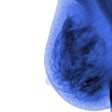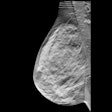
Debate has raged over the impact of the Patient Protection and Affordable Care Act (ACA) of 2010 on access to healthcare services. However, at least one hospital in California found that the ACA didn't necessarily change access to screening mammography, according to a new study published in the American Journal of Surgery.
The legislation did boost the number of patients with health insurance, wrote a team led by Dr. Vikas Satyananda of Harbor-UCLA Medical Center in Torrance, CA. Still, its effect on various clinical measures for breast cancer screening, at least at this facility, was slight.
"Overall, the initial impact of the ACA on [our hospital] on breast cancer care appears to be small, with no significant difference in clinical stage at presentation in breast cancer patients or the number of screening mammograms performed," the researchers wrote.
The ACA mandated the expansion of Medicaid to increase access to healthcare services, including breast cancer screening. It reduced the number of uninsured adults from 37 million in 2010 to 23 million in 2016 and also appears to have increased the use of healthcare services. But it has been difficult to determine the longer range effects of the legislation, such as improved patient outcomes, the team noted (Am J Surg, January 17, 2019).
To examine the ACA's effect on breast cancer screening and diagnosis at Harbor-UCLA Medical Center -- a "safety-net" hospital that has a higher mix of patients eligible for Medicaid, Medi-Cal, and Medicare -- Satyananda and colleagues reviewed two cohorts: women diagnosed with breast cancer between 2011 and 2012, before full implementation of the ACA in 2014, and those diagnosed between 2015 and 2016, after the law was implemented.
The group discovered a statistically significant decrease in the annual number of breast cancer diagnoses pre- and post-ACA implementation, with 310 women diagnosed in the pre-ACA period and 203 diagnosed in the post-ACA period (p = 0.008).
That might lead observers to conclude that the ACA was effective in reducing breast cancer via screening. However, this finding was confounded by the fact that the researchers also found no statistically significant difference in the absolute number of screening mammograms performed, the method of detection, or the overall clinical stage.
On the positive side, they found a statistically significant decrease in the number of patients who were uninsured or who paid for mammography themselves, as well as an increase in patients who were covered under Medi-Cal.
| Patient insurance status pre- and post-ACA implementation | |||
| Insurance status | Before ACA | After ACA | p-value |
| Self-pay/uninsured | 34% | 6% | < 0.0001 |
| Medicaid | 56% | 55% | Not significant |
| Medi-Cal | 3% | 21% | < 0.0001 |
| Medicare | 5% | 9% | Not significant |
Overall, the ACA's initial effect on this particular facility regarding breast cancer care was small, but it is important to factor in how the legislation may have affected where patients were treated, the group noted.
"We found that, at a safety-net hospital, there was instead a significant decrease in breast cancer cases treated in the years following ACA implementation, with no detectable impact on mammographic screening services," the team wrote. "These findings are, perhaps, not unexpected as we can hypothesize that there may have been an increase in the number of patients who were able to obtain non-Medi-Cal insurance and seek care elsewhere."




















